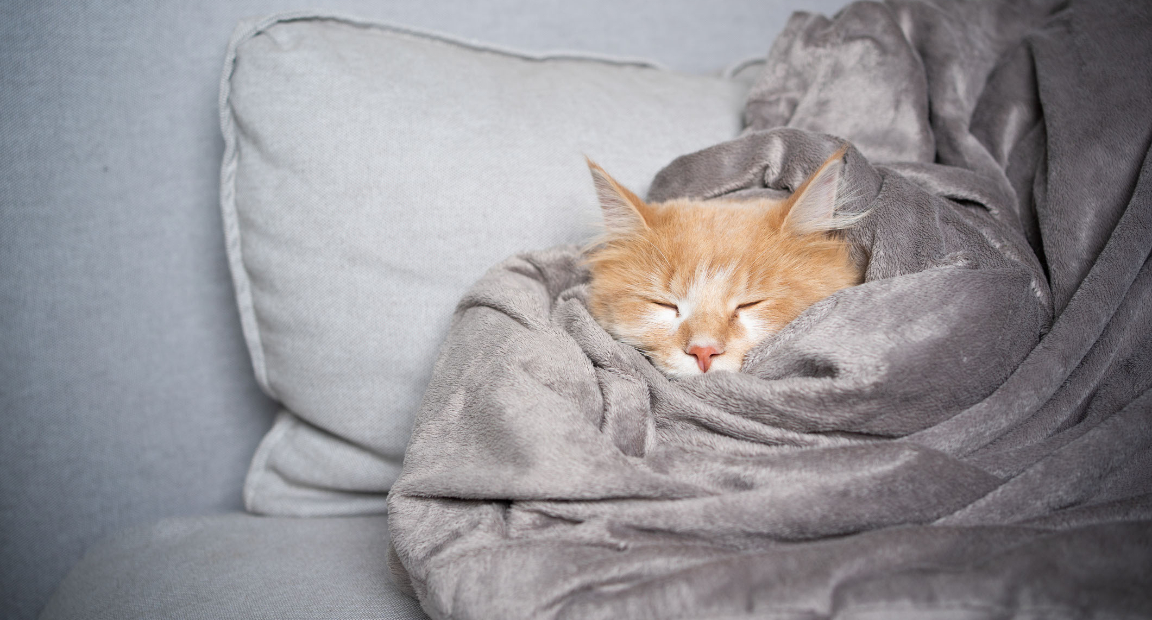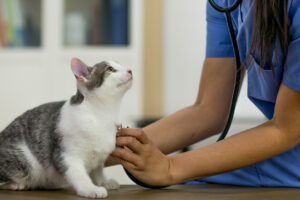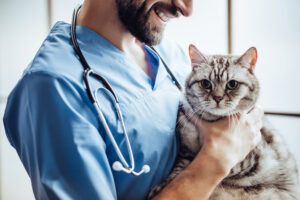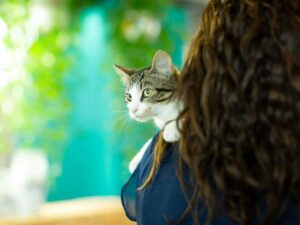What is Herpesvirus?
Feline herpesvirus is one of the most common viral causes of nasal discharge and sneezing in cats, particularly young cats. It is also a very common cause of eye diseases in cats. It is a common component of cat flu and is caused by feline herpesvirus type 1 (FHV-1). This herpesvirus is very contagious between cats, but humans and dogs cannot catch it. Like herpesvirus affecting humans, infected cats often become carriers for life. Feline herpesvirus is spread through saliva, oral and nasal discharge, often through direct contact with infected cats.
Signs & Symptoms
Although the severity of the signs and symptoms can vary, common signs include sneezing, nasal and ocular discharge, which may be accompanied by loss of appetite, fever, and lethargy. The discharge from the nose and eyes may start as a clear discharge and progress to be creamy or green, and form crusts around the nose and eyes. Unlike feline calicivirus, ulcers in the mouth are not common with herpesvirus, but some cats may drool. Pneumonia can develop as a secondary complication of feline herpesvirus. Sometimes cats can develop dermatological signs with feline herpesvirus, which may appear like erosive or ulcerated lesions on the face, mouth, eyes, and nose. Conjunctivitis is a common manifestation of feline herpesvirus and can affect both or only one eye. Corneal ulcers can also occur with feline herpesvirus, along with other complications affecting the eyes, such as symblepharon (adhesion of the tissue of the eyelid to the tissue of the eyeball), keratitis, (inflammation of the cornea) cand entropion (where the eyelid rolls in). Cats may have one or more of these signs in recurrent infections
Diagnosis
Feline herpesvirus may be diagnosed by the veterinarian as the most likely condition based off the symptoms, through examining the affected feline patient and collecting the patient history, including vaccination status, age, and history of recent boarding or contact with other infected cats. Additional tests may be recommended which may include blood screens, polymerase chain reaction (PCR), virus isolation or biopsies, to detect the presence of feline herpesvirus. Positive tests can occur in clinically well cats because the virus can still be present in cats that appear well. These tests help the veterinarian to better understand which viruses are involved, especially in ongoing or severe cases.
Treatment
As for many viruses, there is no one cure for feline herpesvirus, so treatment is focused on managing symptoms and providing supportive care. Antiviral medications may be recommended, the most commonly used of which is called Famciclovir. Lysine supplements may also be recommended. Other supportive care may include intravenous fluid therapy to help correct dehydration, nutritional support, pain relief and anti-inflammatory drugs to keep the patient comfortable, as well as treating secondary infections with antibiotics. It is important to keep the feline patient warm and comfortable, keep the eyes and nose clean and free from crusts or discharge. Specific treatment for signs affecting the eyes may also be required, which may include eye drops or even surgery.
According to PetSure data in 2022, cat flu of which feline herpesvirus is a common component had an average claimed cost of $288.00 and a maximum claimed cost of $8,754*.
Recovery
Recovery from feline herpesvirus infection depends on the severity of infection and health of the feline patient. Most acute cases of upper respiratory disease will resolve in a week or two with supportive care. For young kittens or cats with other illnesses feline herpesvirus infection can be fatal. Those that recover are likely to become carriers and have flareups throughout life, especially if they are stressed or unwell.
Prevention
Preventing feline herpesvirus may be difficult as you may have adopted your feline friend already carrying or infected by feline herpesvirus. But as with most viruses, prevention is focused on isolating sick cats, maintaining great hygiene, including ensuring that hands, bedding, and any other in-contact items are disinfected before meeting with well cats. Vaccination plays a role in helping to prevent feline herpesvirus. It is still possible for vaccinated cats to become infected with herpesvirus however, so vaccination is just one of the preventative measures to take. For cats that are already carriers, the aim is typically to avoid flare-ups. This means maintaining a stress-free environment, excellent nutrition and addressing any other health concerns promptly.
Frequently Asked Questions
Feline herpesvirus is specific to cats and does not infect humans.
There is no cure for feline herpesvirus, so prevention and managing the symptoms are important to keep your feline friend as healthy and happy as possible.
Vaccination is an important preventative measure against feline herpesvirus. Vaccination may not be completely protective but can reduce the severity of infection.
Feline herpesvirus is generally covered by comprehensive accidental injury and illness pet insurance policies administered by PetSure (check our brand partners at petsure.com.au/partners), unless related to a pre-existing condition or exclusion. Please refer to your policy documents and Product Disclosure Statement (PDS) for more information.*
Preventative and routine items such as vaccinations whether recommended by your veterinarian or not are generally excluded by PetSure policies.
Please refer to your policy documents and Product Disclosure Statement (PDS) for more information.*
According to PetSure data in 2022, cat flu, of which feline herpesvirus is a common component, had an average claimed cost of $288.00 and a maximum claimed cost of $8,754.
*Reimbursement for these claims would be subject to limits, such as annual benefit limits or sub-limits, benefit percentage, applicable waiting periods and any applicable excess. Cover is subject to the policy terms and conditions. You should consider the relevant Product Disclosure Statement or policy wording available from the relevant provider. Treatment relates to Herpesvirus and all medically related conditions in that policy period.
References
Symblepharon in kittens: a retrospective study of 40 kittens and 54 eyes (2002–2022)
Pet insurance can help by covering a portion of the eligible vet bill if the unexpected happens. Because it is difficult to predict the costs of veterinary care, it can help to have measures in place to help prepare for the unexpected. Check out our partner network and explore our policy tools to find a pet insurance policy.
Not all conditions or items are covered by Pet Insurance. Refer to the applicable Product Disclosure Statement for information about coverage and exclusions.



 Fact checked
Fact checked





